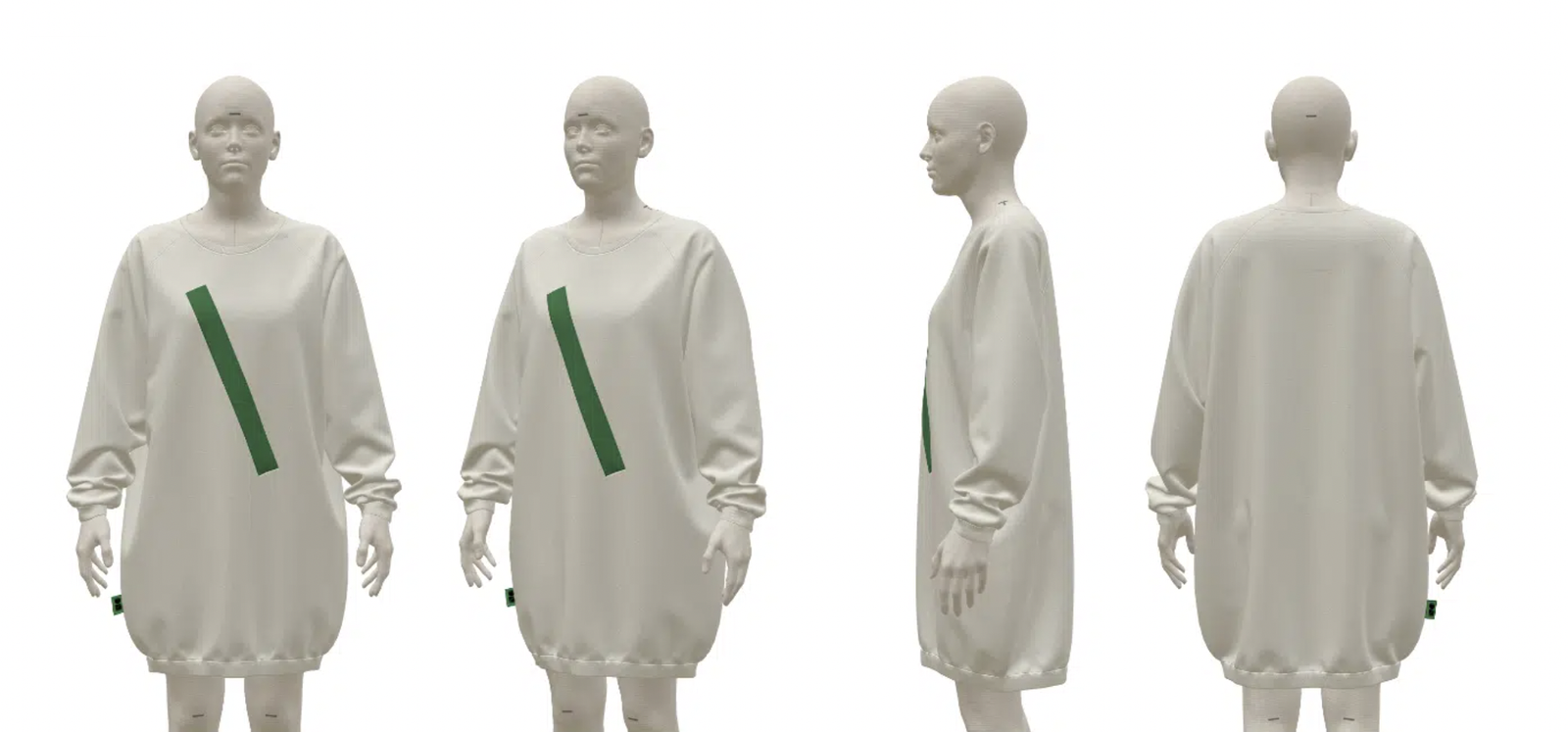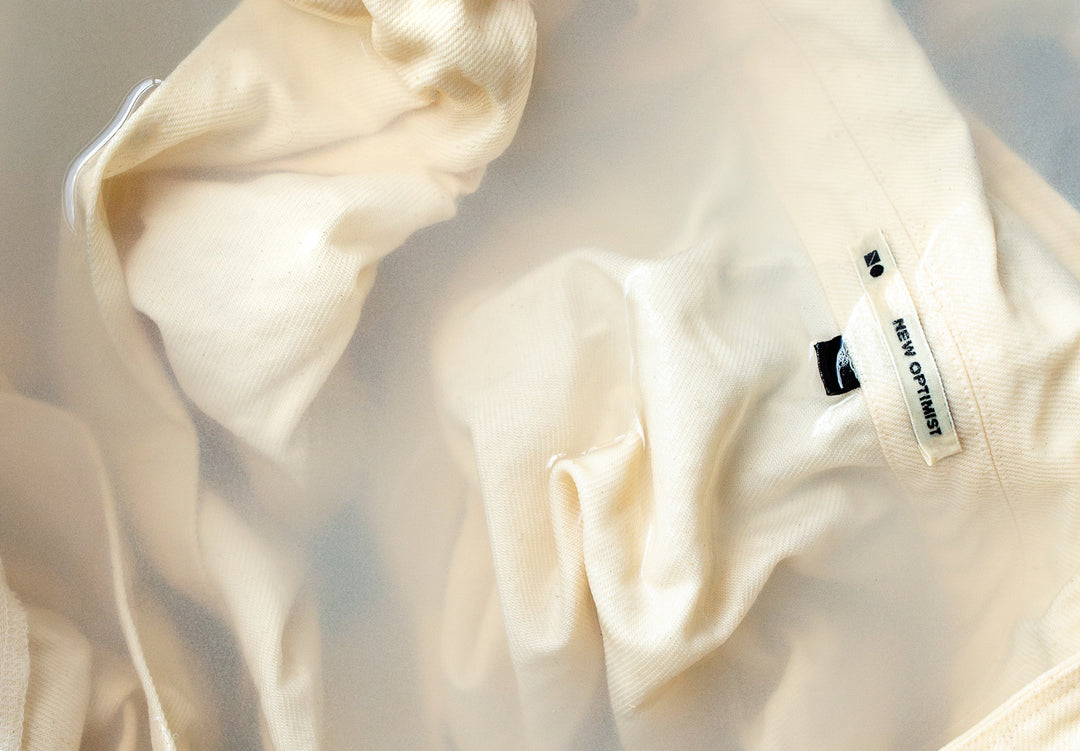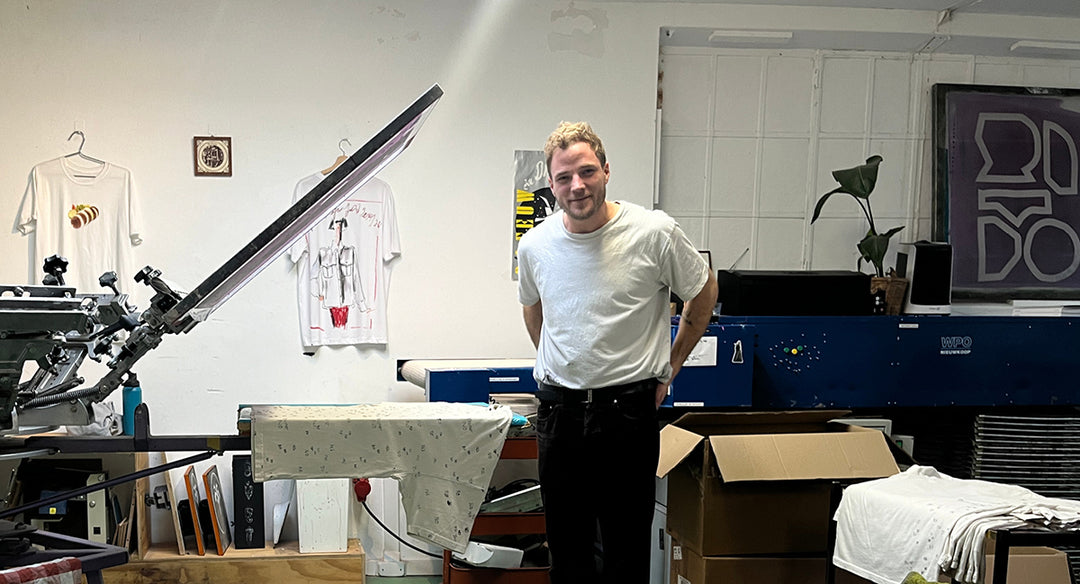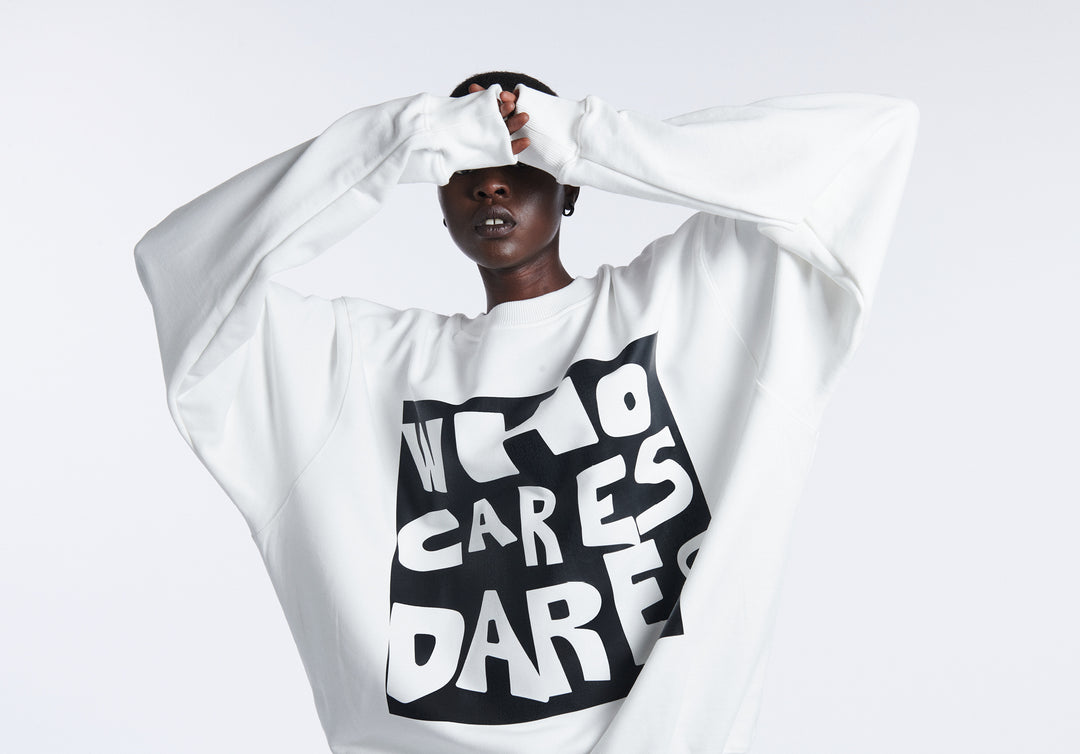Integration of 3D Technologies within Small Scale Apparel Production

If you have read our previous blog post, you’ve heard that New Optimist is in the process of transitioning from a traditional, physical way of making samples to a digital process, using 3D technologies.
In early December, we began the digitisation of New Optimist materials. Three existing styles were chosen to be used as building blocks for future designs. After choosing the blocks, the next step was to collect the fabrics and trims for scanning at Vizoo. Thanks to Vizoo, we got the necessary texture maps needed to generate high-quality digital fabrics. Creating an accurate translation of the material is crucial for developing a realistic render. As the scans were being completed, our patterns were exported from Illustrator and imported into the 3D software, Browzwear.
We chose to digitise the Sweat Dress Tulip as the first style. Finding the correct fit of the dress, on the digitally constructed avatar presented surprises. Although the avatar is based on our standard female sample size, the dress fit differently than it does in reality. Indeed, avatars are stiffer, and adopt different postures than real humans. However, after a few workarounds, we were able to get the digitised dress, to look nearly identical to the version hanging in our store. With a few adjustments, the render is accurate enough that we could potentially use it to sell upcoming designs. The next step was to test the 3D generated tech pack with our production team. At this point we are ready to merge the project’s work with New Optimist’s production team.
We are introducing digital tools to a stitching team that is completely unfamiliar with these resources. As local producers, we have the privilege to discuss details, make decisions under the machines and collaborate with our stitching workers. We have utilised the feedback given to us by production to revise the stitching instructions and tech pack. At this stage, we must evaluate the ways we communicate, such as language and new terminology. When working in a diverse team with four different languages, we have to make the documentation accessible to the majority. Since we have produced the Tulip dress before, we are amending its design to make the stitching instruction new and unfamiliar. This way, the 3D generated tech pack and render will have to lead the production. Depending on the outcome of this sample, the 3D model and patterns may need to be adjusted.
One of the broadest challenges New Optimist has faced is stabilising garment sizes. When designing small batches, we are able to adjust sizes based on the style and fabric shrinkage. Although helpful, it can be time consuming and costly, especially when production quantities increase. With 3D tools in place, we can skip the physical alterations by editing, viewing and fitting all within 3D software.
Nearly four months into this project, we have been faced with questions that are relevant beyond the scope of 3D sampling. The transition from physical to digital sampling has helped push for organisation and consistency in New Optimist’s design and production processes. From the collection of materials and digital assets to exporting tech packs to physical making, we can establish a more efficient design to production process.






